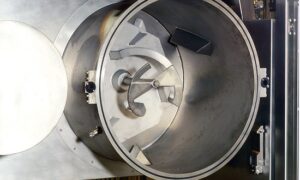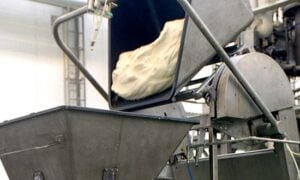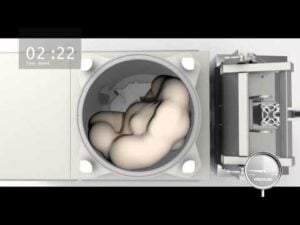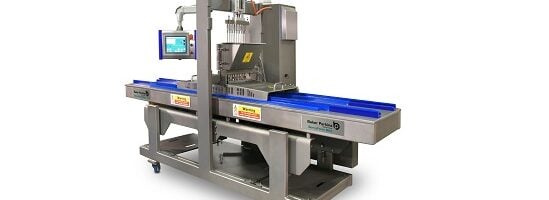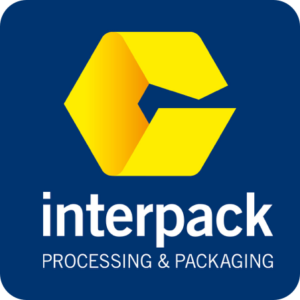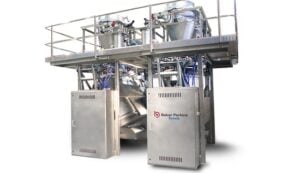
While it’s widely accepted that the high-speed mixing ability of our Tweedy™ mixing system brings substantial benefits in greater throughput, few understand how and why a high-speed process consistently creates high quality dough.
The key to the significant benefits provided by the Tweedy™ process is rapid development of the gluten. This is achieved by a unique high-speed double helix mixing plate working in conjunction with b
affles on the periphery of the bowl to produce an extremely effective three-dimensional mixing action. The rate of gluten development is optimised for throughput and quality
by controlling the rate of energy input to a value that is specific to the flour being used and the product being made.
Dough development is the key phase in mixing. Stretch and shear forces created by the mixing action extend the protein molecules, enabling cross-link bonds to form between them, creating a fine, elastic network. The rate at which dough develops is directly related to how quickly molecules can be extende
d and new bonds formed, so the more intense the mixing action the faster the mix.
The Tweedy™ mixing action is particularly strong in this regard because the shape and speed of the mixing plate generates stretch and shear in the vertical as well as the h
orizontal planes to create an evenly distributed 3D mixing action.
The Tweedy™ carries out the same process as other machines, but works the dough more efficiently and, as a consequence, more quickly. Speed of mixing is the key to another important benefit. The Tweedy™ typically mixes a batch of dough in three minutes, giving up to 10 batches per hour, allowing for loading and discharge. Other machines – spiral and roller bar mixers, for example – achieve just three batches per hour as a rule.
Because the process is rapid and batch sizes comparatively small for a given output, the no-time dough is passed through the divider to the first prover before fermentation can begin. In mixers taking 20 minutes per batch, dough can be rising in the divider hopper which adversely affects scaling accuracy.
Additionally, product consistency achieved through developments in process control has virtually eliminated batch-to-batch variation, and if the line stops for any reason the amount of dough rejected is minimal and re-start is extremely rapid.
In fact, there are no process drawbacks to high speed Tweedy™ mixing. If you can do a job better and quicker, why not?
Check our other bread processing equipments that cover a broad spread of products and their installation makes a significant impact on quality and cost.
